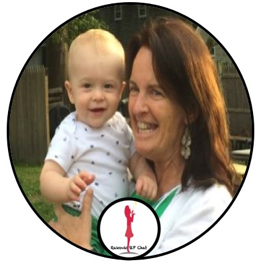There are many areas for challenges for individuals with Autism Spectrum Disorder. No two people have the same communicative challenges. Some children with autism spectrum disorder have echolalia.
Echolalia At one time the thought was Echolalia was a behavior to eliminate but we have a better understanding of the role of Echolalia. Echolalia means that you are ‘echoing’ something that someone else has said.
- When children repeat words right after they hear them, it’s known as immediate echolalia.
- When children repeat words at a later time, it’s known as delayed echolalia. As a result of the time delay, delayed echolalia may seem very unusual because these sentences are used out of context. For example, a child might enjoy a song his teacher sang at circle time, and then later ask to sing it at home by saying “It’s circle time” instead of saying the name of the song. One student I had would shout “Free Willy” whenever he was sad as this was the feeling he had when he watched this movie.
While it might be difficult to figure out what a child is trying to say when he or she uses echolalia, learning a little bit about this type of speech can help you figure out the meaning behind his or her message. Here are three things you need to know about echolalia.
1. Children with ASD use echolalia because they learn language differently. Children with ASD often follow a different route. Their first attempts at language may be longer “chunks” of language (phrases or sentences), which they are not able to break down into smaller parts. These chunks are more grammatically complicated than they could put together themselves, and they don’t understand what the individual words mean. For example, it could be “ It’s time for your snack” when they are hungry. He knows that the words have something to do with getting something to eat but does not know the individual words which is also why the pronoun is confused.
We can help children who use echolalia by helping them learn to break down longer chunks of language and understand what the individual words mean so they can use them more flexibly.
There are many reasons children might use echolalia for a communicative purpose.
Echolalia often has a purpose or message.
- There may be times when children use echolalia to soothe themselves when they’re upset or to rehearse something, and in those cases, echolalia may not be intended to send a message to someone. These could be from a television show or a book they like. One student I had would say, ” My highly-trained paws are at your service” repeating a catchphrase from the show, Paw Patrol.
But there are also many reasons why children use echolalia for a communicative purpose, such as:
- To ask for things e.g. a child might say “Do you want macaroni and cheese?” to ask for macaroni and cheese, as that is how they hear their parents ask them if they want it for dinner.
- To start an interaction or keep it going e.g. a child might initiate a game of Hide and Seek by saying a line from the game, like “Ready or not, here I come!”
- To draw someone’s attention to something e.g. a child might draw attention to something he’s noticed by using a line he’s heard before to draw attention to something else, like ““I don’t care what they’re going to say. Let the storm rage on. The cold never bothered me anyway.” from Frozen to talk about the weather.
- To protest something e.g. if a child imitates “You don’t want a drink of milk?” as his parent is getting out the milk to indicate that he does not want to have milk.
- To answer yes e.g. if a child imitates “Do you want some ice cream?” right after he’s been asked that question, he may actually want some ice cream and really mean “yes”.
Figuring out the meaning behind echolalia can be tricky! Looking at the context is very important, and thinking about the time the child originally heard it can help too. With a little detective work, it’s possible to figure out what he’s trying to tell you.
Remember echolalia is a step to flexible language.
Researchers who study echolalia have noticed patterns in the way it progresses in children with ASD [1]:
Initially, children echo “chunks” of language without understanding what they mean.
Then, children start to modify these chunks of language. They mix and recombine words and phrases they have used (this is called “mitigated echolalia”).
As they start to understand more language, some children use shorter sentences or just use one or two words to express themselves.
Gradually, language becomes more spontaneous and flexible.
Echolalia might be used occasionally, especially when a child is tired, confused or frustrated. But more words and phrases are used appropriately and flexibly once the child’s understanding increases.
.References
- Prizant, B. (1983). Language Acquisition and Communicative Behavior in Autism: Toward an Understanding of The “Whole” of it. Journal of Speech and Hearing Disorders, 48, 296-307.
- Stiegler, L. N. (2015). Examining the Echolalia Literature: Where do Speech-Language Pathologists Stand? American Journal of Speech-Language Pathology, 24, 750-762.


